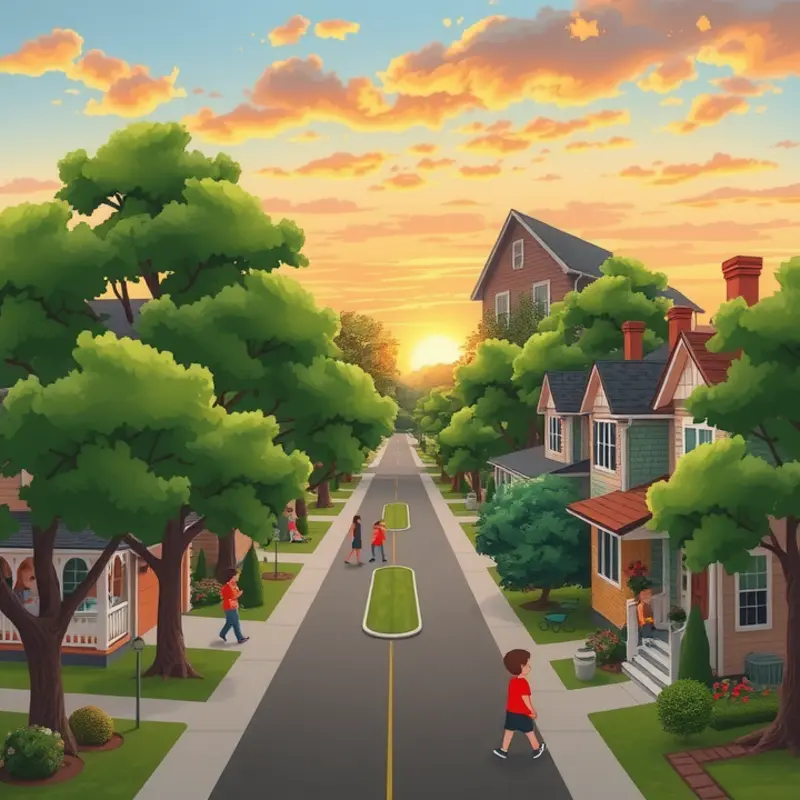Making the leap into your first rental can be both exciting and daunting. As a young adult or a couple starting out, you’re faced with a big question: urban or suburban? Do you crave the hustle and bustle of city life with its endless coffee shops and nightlife, or does the charm of tree-lined streets and backyard barbecues call to you? Each option has its perks and quirks, and understanding what you value most will guide you through your renting journey. Whether you’re imagining a cozy studio in the midst of it all or a spacious townhouse with a picket fence, this decision can shape your lifestyle in more ways than you might think. So grab a snack (just in case you’re facing the hunger of indecision), and let’s dive into the world of urban and suburban renting!
The Allure of Urban Living

City life draws young renters with its undeniable charm. One of the main attractions of urban living is proximity to job opportunities. Many companies position their headquarters in cities, offering young professionals a chance to cut down on commuting costs and time. This locational advantage can lead to improved work-life balance, freeing up time for personal pursuits and relaxation.
Urban areas often pulse with a vibrant social scene, appealing to those seeking an active lifestyle. The plethora of restaurants, concerts, and nightlife options offer endless opportunities for entertainment. Living in the city means never running out of things to do, places to explore, and people to meet. The urban environment fosters a sense of connection and community among its residents, often pulling together diverse groups who share common interests in arts, culture, and cuisine.
Urban amenities extend beyond entertainment, providing practical benefits for day-to-day life. Access to quality healthcare, educational institutions, and public transportation is generally more convenient and extensive in cities. This accessibility extends to services like gyms, parks, and co-working spaces. For those prioritizing an eco-friendly lifestyle, public transit options help reduce carbon footprints, while walking or cycling to nearby destinations supports sustainable living.
However, the sparkle of city lights also casts shadows. Urban living can strain budgets, mainly when it comes to rent and cost of living. Cities tend to have higher rent prices compared to suburban areas, often forcing young renters to compromise on space or move in with roommates to make ends meet.
Noise is another challenge prevalent in city environments. The constant hum of traffic, construction, and nightlife can disrupt the tranquility many crave after a hectic day. Coping strategies might involve investing in noise-canceling solutions or finding housing in less bustling neighborhoods within the city, but these can increase costs further.
Space constraints are intrinsic to city life, where maximizing small apartment layouts becomes a necessary skill. Creative solutions for storage and functional design can help make the most of limited room. For tips on efficient home organization, explore our guide on DIY renter-safe utensil storage.
Despite the drawbacks, the energy and excitement of urban life continue to attract young adults. The possibility of new opportunities and experiences often outweighs concerns about space and cost. Ultimately, urban renting introduces a dynamic phase in life, one where the hustle of the city becomes the backdrop to personal growth and adventure.
Suburban Serenity: A Different Kind of Charm

The allure of suburban living lies in its promise of tranquility and open space, making it an attractive choice for families and couples. Unlike their urban counterparts, suburban neighborhoods offer peace and a slower pace that can be particularly appealing for those seeking a respite from the hustle and bustle of city life.
One of the most significant draws of suburban living is the prospect of larger homes. With more square footage, families can enjoy spacious interiors that accommodate the needs of growing children and provide room for hobbies or work-from-home setups. Coupled with expansive yards, these properties offer the perfect backdrop for outdoor activities and private gatherings, enhancing the overall quality of life.
Quiet streets contribute to a serene environment, ideal for families with young children who desire safety and calm. The reduced traffic and lower noise levels mean that children can play outside more freely, and simple joys like evening strolls become more enjoyable. Additionally, many suburban areas boast well-maintained parks and recreational facilities that are family-friendly, encouraging an active lifestyle.
Another appealing aspect is the strong sense of community often found in suburban neighborhoods. Residents tend to establish meaningful connections with their neighbors, fostering a sense of belonging and collaboration. This community spirit is vital, especially for families with young kids, who benefit from shared childcare and neighborhood events that build lasting friendships.
While it’s true that commuting from the suburbs can be time-consuming, many people find the trade-off worthwhile. With strategic planning and flexible work hours becoming more common, the longer commute is often offset by the benefits of suburban living. Public transport systems are constantly improving, and many suburbs offer convenient access to larger highway systems, making daily travel more manageable than ever before.
Suburban areas are also generally equipped with a variety of amenities that cater to families. From excellent schools to diverse shopping centers, these neighborhoods provide all the necessities within a short drive, reducing the need to venture far for day-to-day errands. The proximity to quality schools is a particularly important factor for couples planning to start a family, as educational opportunities are a top priority. For families considering the cost of suburban living, budgeting for move-related expenses can be essential. For strategies on how to manage moving costs efficiently, check out budgeting your moving costs.
Lastly, the emphasis on safety is another cornerstone of suburban life. Suburban neighborhoods are often perceived as safer, with lower crime rates compared to urban areas. This atmosphere of security allows families to enjoy their lives with peace of mind, making it an integral part of the suburbs’ distinctive appeal.
In essence, suburban serenity provides a unique charm that satisfies the need for space, safety, and community. Although it may not be the right fit for everyone, for many families and couples, this environment offers a fulfilling lifestyle that aligns with their values and aspirations.
Final words
Choosing between urban and suburban living is a personal choice that reflects your lifestyle preferences. Whether you’re swayed by the nightlife, job opportunities, and amenities of city life or the spacious homes, community vibe, and peaceful surroundings of the suburbs, each has its unique appeal. The ultimate goal is to find a place that not only fits your budget but also meets your lifestyle needs. Remember, it’s not about whether the grass is greener but about what type of environment enables you to thrive. Choose wisely, and happy renting!









